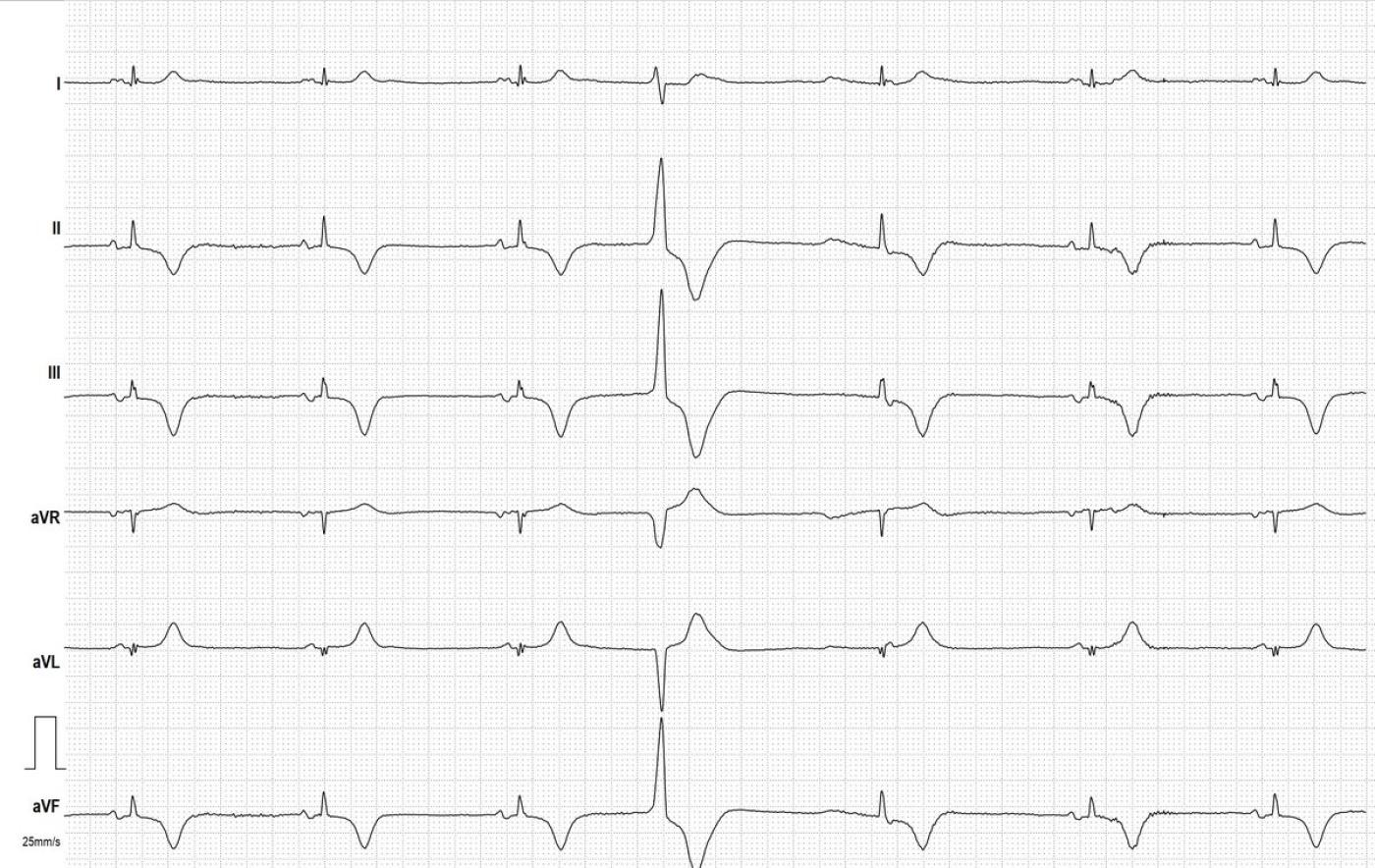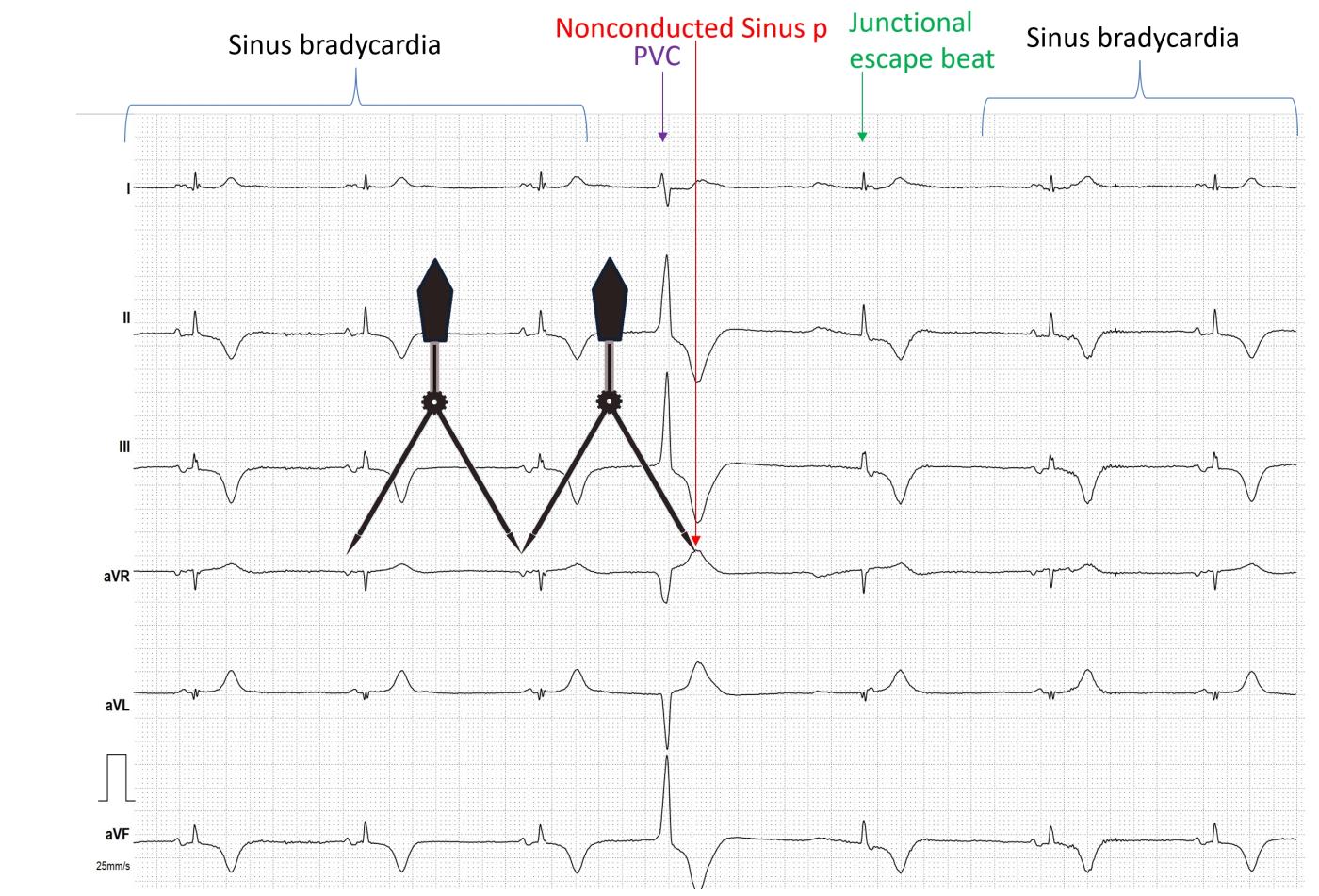Let's analyze the ECG. It comes from a pacemaker patient whose pacemaker was briefly switched to VVI at 30 bpm due to a stimulation threshold test. The first 3 beats show a sinus rhythm with a frequency of approx. 40 bpm. This is followed by a premature ventricular contraction (PVC). The P wave of the next sinus node beat lands exactly on the T of the PVC. This cannot be conducted to the ventricles, either because the ventricular myocardium is still unexcitable or the PVC has conducted retrogradely into the AV node and this is therefore still refractory. This is followed by an artifact that should not be confused with a P wave. The next beat is a junctional escape beat (the QRS complexes are identical to the sinus node beats). A sinus rhythm is then established again (sinus bradycardia). The inverted T waves (in II, III and aVF) are to be interpreted as cardiac memory, which refers to T wave inversions that result when normal ventricular activation resumes after a period of abnormal ventricular activation.
-

- Dr A Röschl's blog
- Log in or register to post comments
All our content is FREE & COPYRIGHT FREE for non-commercial use
Please be courteous and leave any watermark or author attribution on content you reproduce.



